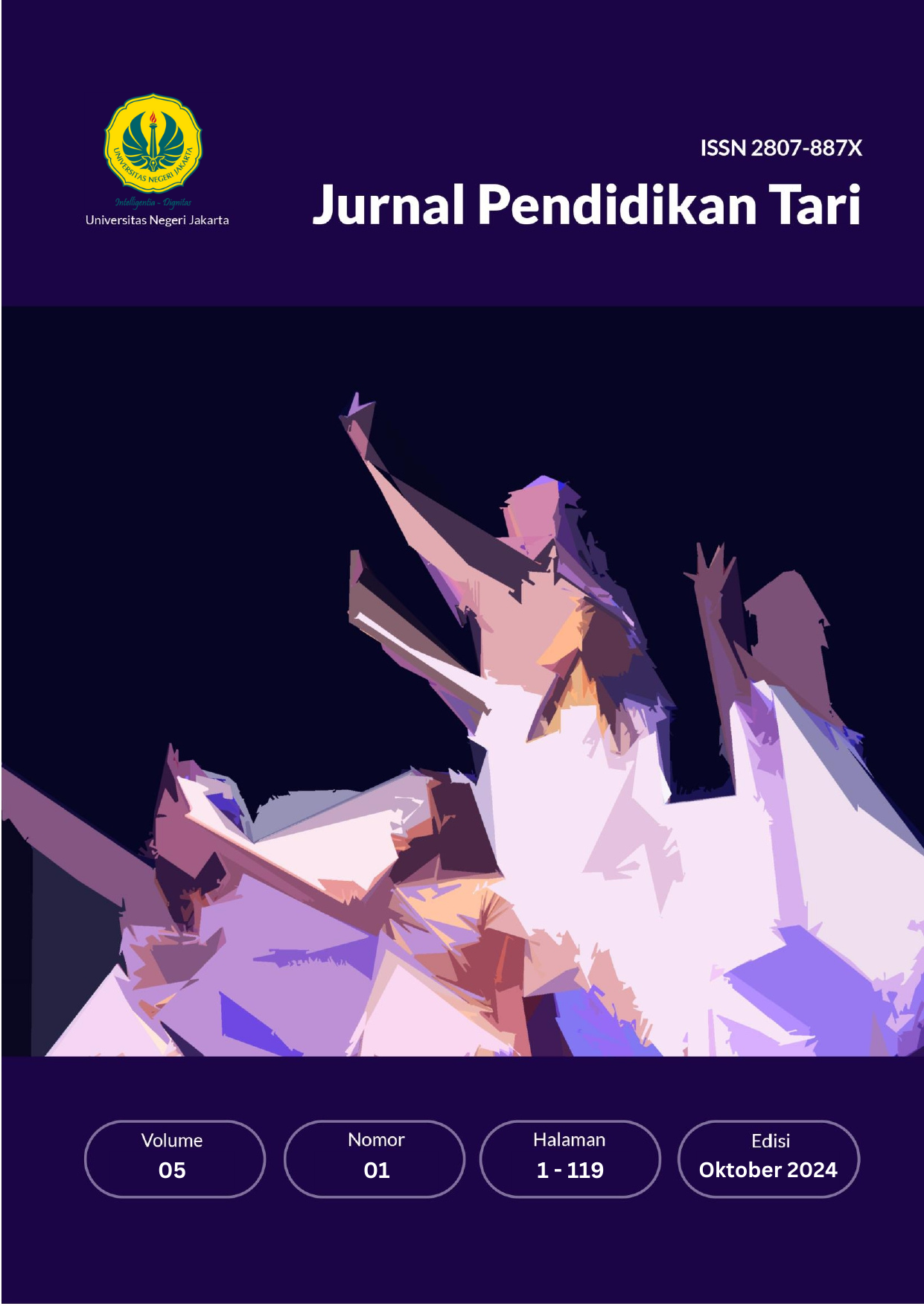Presentation Model of Ronggeng Beken Dance in the Pesona Nusantara Bekasi Keren Festival from the Performativity Perspective according to Richard Schechner
DOI:
https://doi.org/10.21009/JPT.518Keywords:
Ronggeng Beken Dance, Performativity, Pesona Nusantara Bekasi Keren, Cultural Identity, Richard SchechnerAbstract
Ronggeng Beken Dance is a cultural expression of the people of Bekasi, showcased in the Pesona Nusantara Bekasi Keren Festival. This article discusses the presentation model of the Ronggeng Beken Dance through the lens of performativity according to Richard Schechner, encompassing the elements of ritual, restored behavior, and performativity in the performance. Using a qualitative approach with ethnographic methods, this study analyzes how the Ronggeng Beken Dance reflects local cultural identity while adapting to the dynamics of the multicultural society in Bekasi. Composed by Gema Nusa Patriot, the Ronggeng Beken Dance combines Betawi and Sundanese cultural elements in its movements and musical accompaniment, symbolizing the unique culture of Bekasi. The dance presentation also integrates modern props such as sunglasses, adding a "cool" or modern dimension to local tradition. The results of the study show that this performance serves not only as entertainment but also as a medium to strengthen the cultural identity of the Bekasi community in a large-scale festival. Schechner's performativity perspective helps to understand the dynamics of the Ronggeng Beken Dance presentation, which creates space for social and cultural transformation within the multicultural community.


